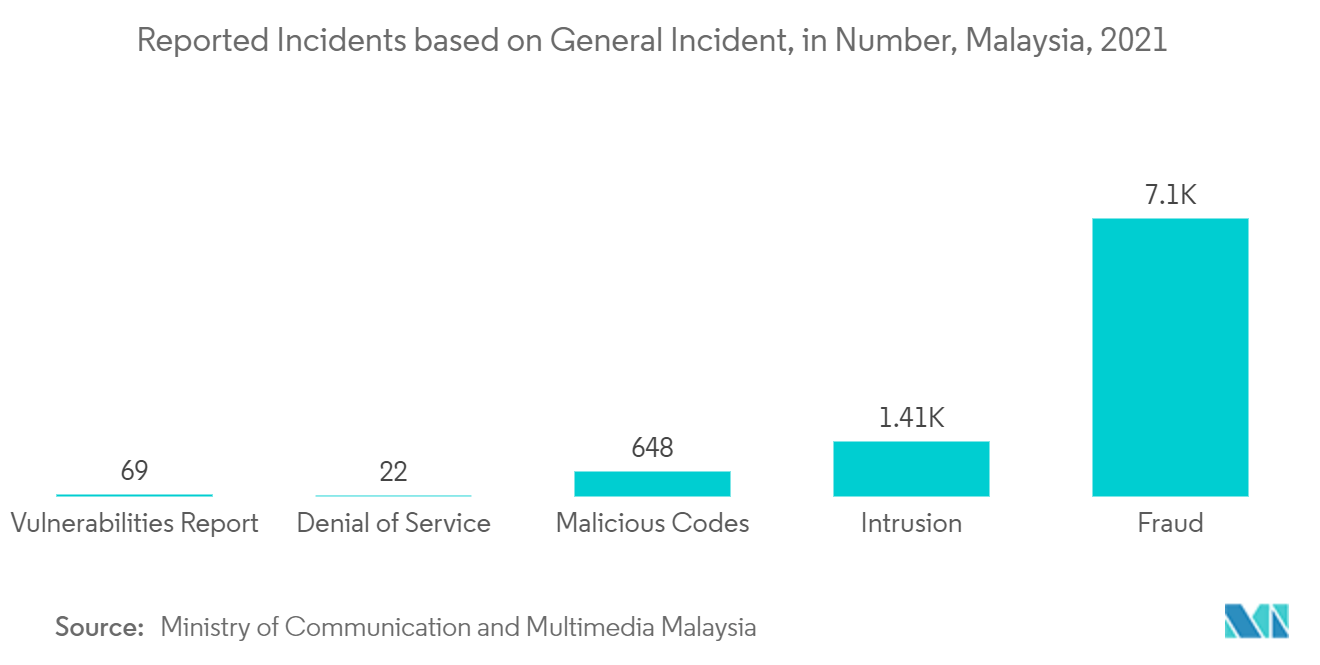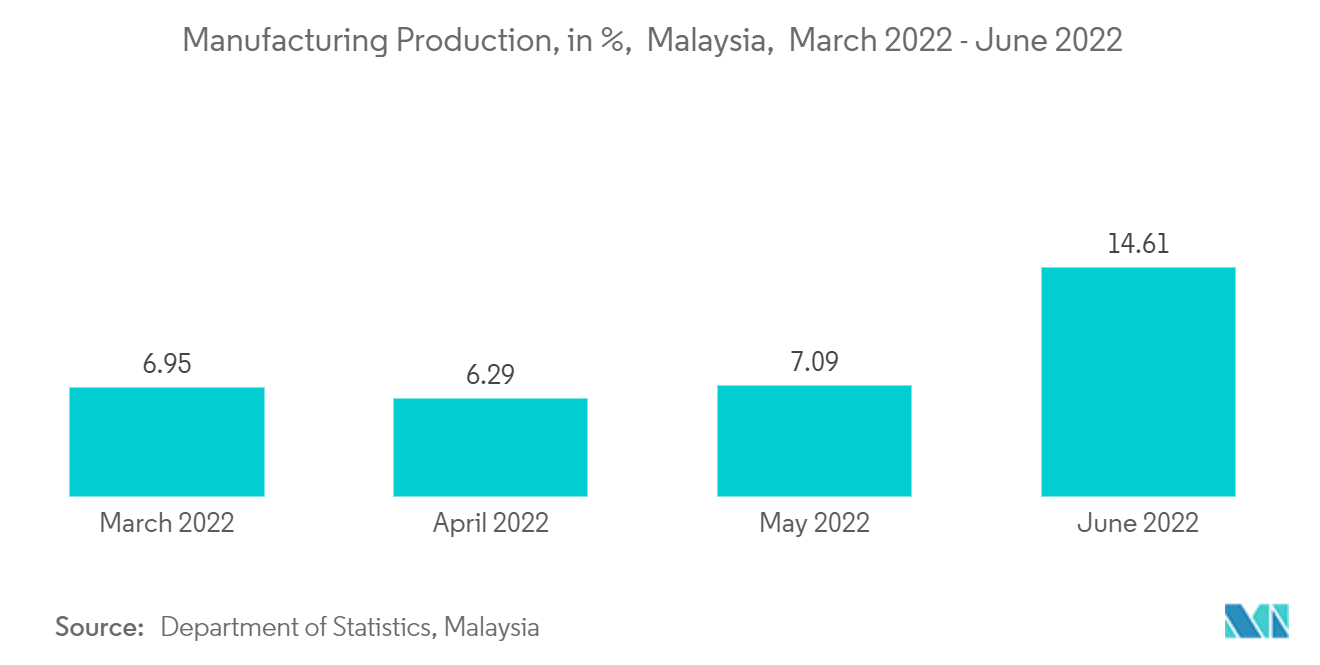Market Trends of Malaysia Cybersecurity Industry
Identity Access Management will Drive the Market
- The rise in cloud services, social and mobile, has reduced the traditional firewall to increasingly outmoded. Digital identity has become crucial to enforcing access controls. As a result, identity and access management are expected to become a priority for modern enterprises.
- IAM, once viewed as an operational back-office issue, has been gaining board-level visibility following multiple high-level breaches due to the failure of organizations to manage and control user access effectively. The prominence of IAM has been further elevated by an evolving regulatory landscape and trends such as Bring Your Device (BYOD) and cloud adoption. The risks related to access to information and data have also increased.
- The impact of an identity-related cybersecurity breach from organized crime, state-sponsored militaries, and others is packed with implications that can impact staff productivity and morale apart from substantial financial and potential life losses and further damage the IT network and company reputation. These risks demand a new level of identity and access management solutions.
- The changing business processes brought millions of new devices into the network, demanding effective access management solutions to protect IP and sensitive data from breaches. In the past years, companies have been investing significantly in IAM solutions to perform job that is out of reach for humans since hackers and malicious employees are primarily unknown and can inflict massive damage to the inside of an organization.
- As IAM centralizes authorization and authentication, it is a prime candidate to track all access securely for Blockchain platforms. This is often needed for compliance and helps the enterprise detect and prevent fraud. An audit trail entry is logged each time a user logs in or requests specific permissions in a particular context. According to the Ministry of Communication and Multimedia Malaysia, last year, The number of fraud incidents in the region was more, with 7,098 reported incidents, followed by intrusion with 1,410 reported incidents and Malicious Codes with 648 incidents.

Manufacturing is One of the Sector Driving the Market
- Every manufacturing industry sector, including automotive, numerous engineering disciplines, power systems, consumer goods, and chemicals, has embraced digital technologies to improve overall operational efficiency and lower production costs. Due to the sectors' efforts to collect data and use it for analytics to prevent downtime and keep the manufacturing sector functioning 24/7, M2M communication and networking have increased.
- Industrial equipment is built to last, with machinery being expensive, cumbersome, and costly to replace. Although IoT offers several positive facets to the industry, these innovations are often incorporated gradually within existing assembly lines, as gaps between legacy and modern industrial devices are prime targets for hackers.
- The workplace shift caused by COVID-19 has altered how work is carried out. With assembly lines managed on the cloud or remotely, Internet usage increased exponentially. This transition, albeit necessary, was rushed due to the pace and intensity of the pandemic, leaving several companies needing to establish security guidelines for their machine operations.
- The convergence of operational and information technology impacts industrial control systems (ICS) security, supervisory control, and data acquisition (SCADA) systems. The designs are exposed to increasing threats and targets for hackers involved in terrorism, cyber warfare, and espionage. According to the Department of Statistics, Malaysia's manufacturing production increased by 52% from March to June.
- Increasingly connected and automated industrial devices with wider networks of Industry 4.0 offer broader surfaces for attack. Reliable industry 4.0 cybersecurity, smart manufacturing, and other industrial operations can help prevent the pipeline from stalling during a procedure. Legacy devices need to have proactive real-time prevention. They can be a foothold for attackers to propagate throughout the network, as older equipment augmented with connectivity generally lacks on-device monitoring capabilities to ensure IoT network security.


